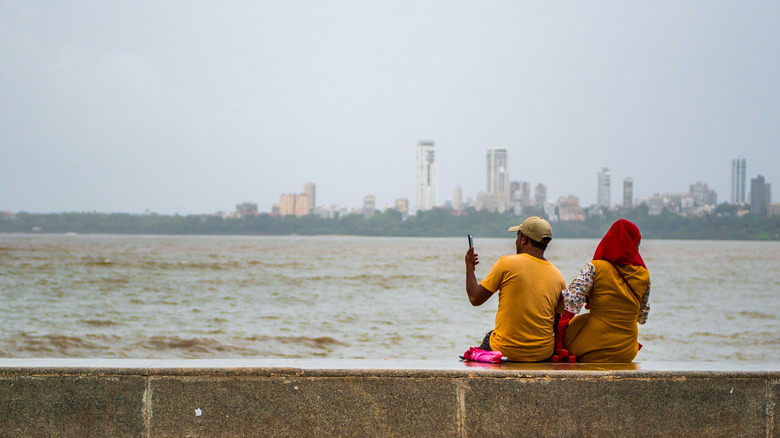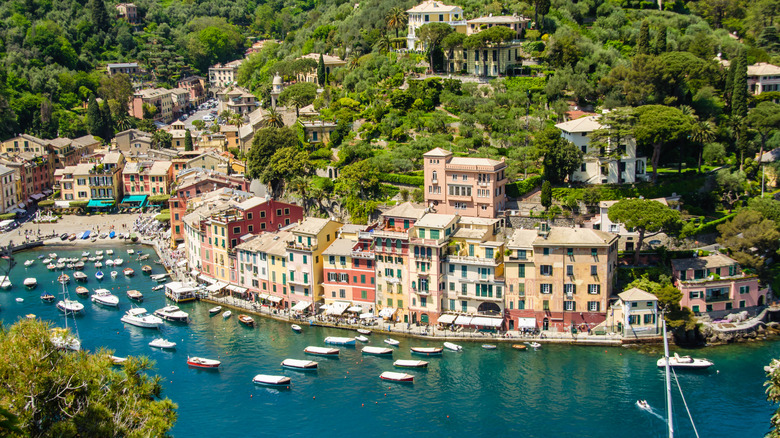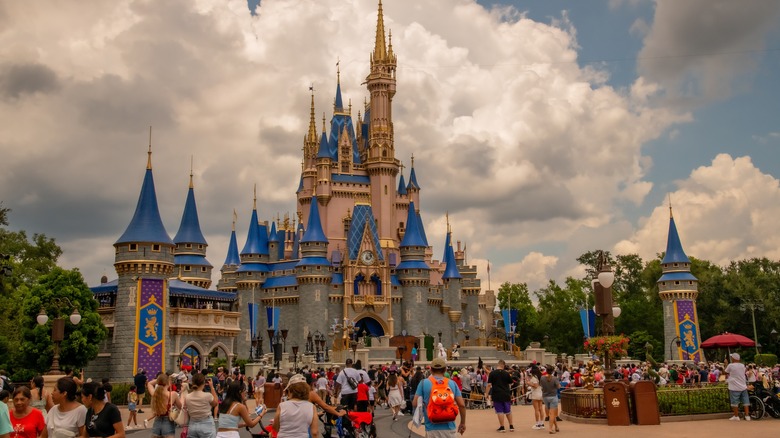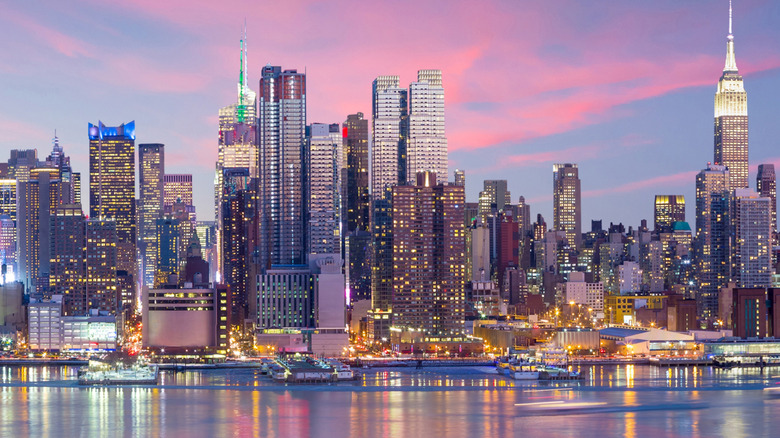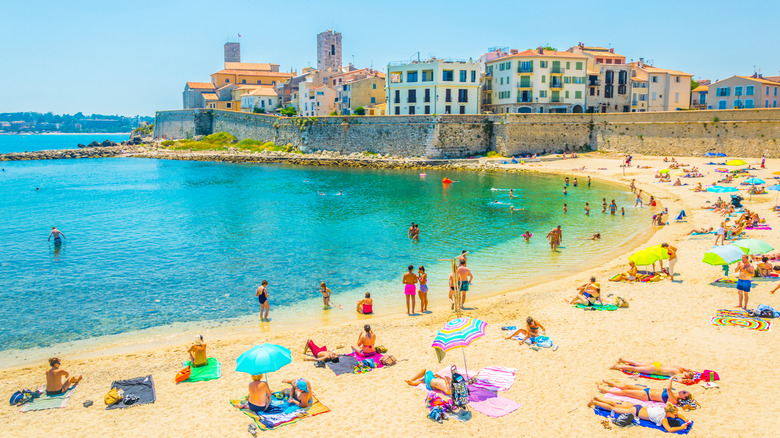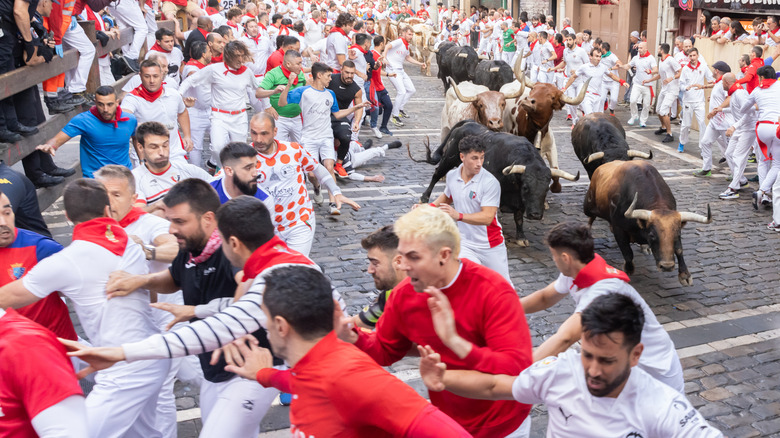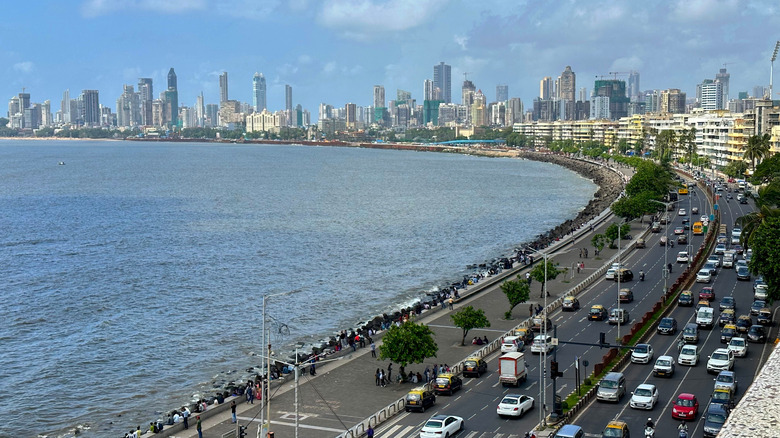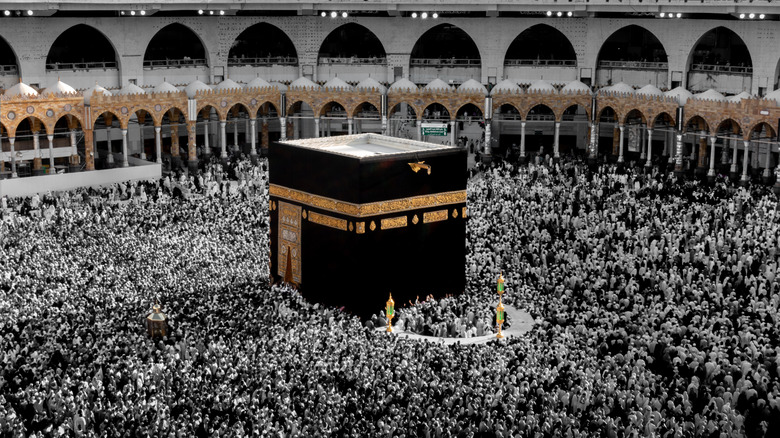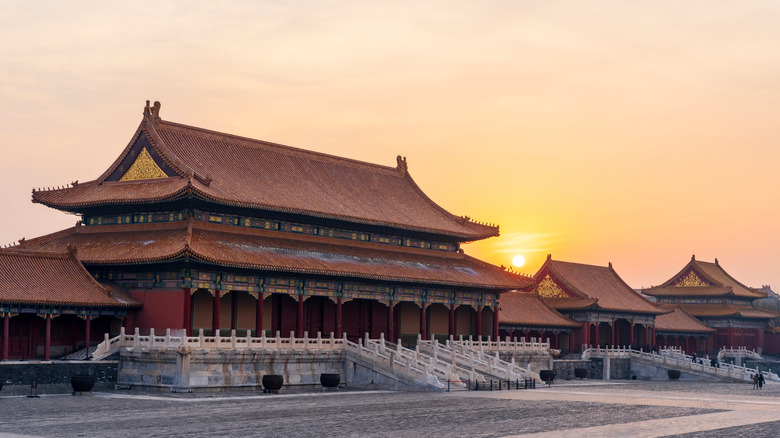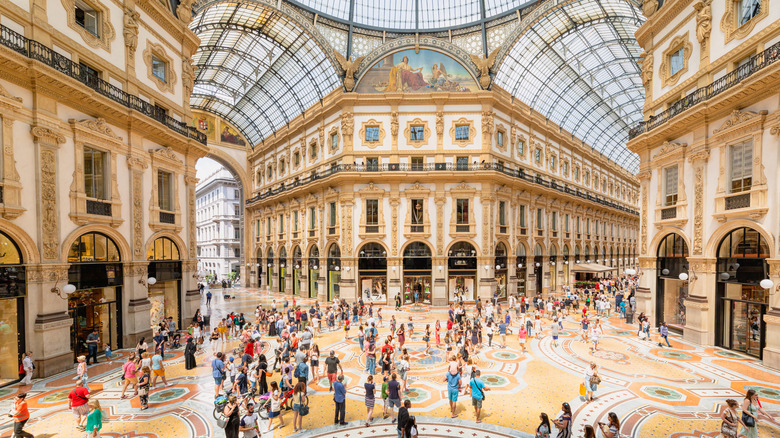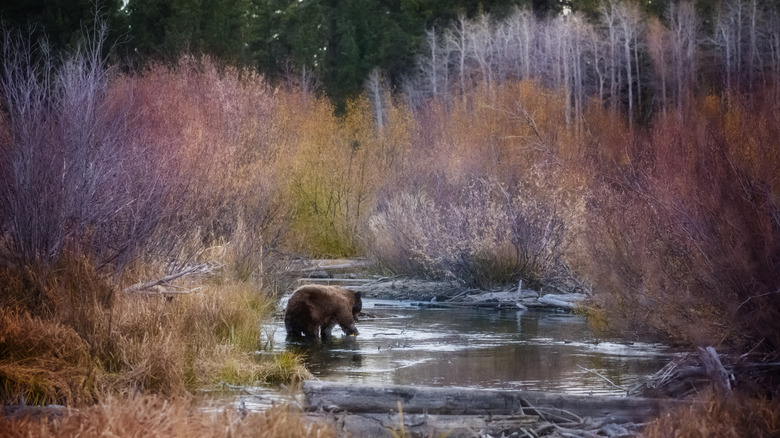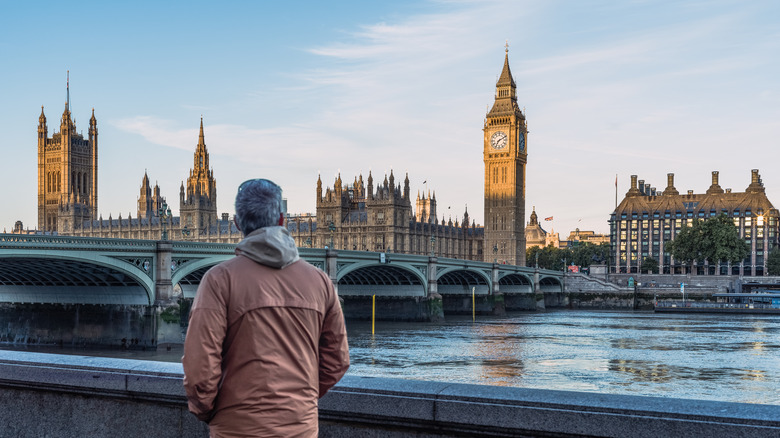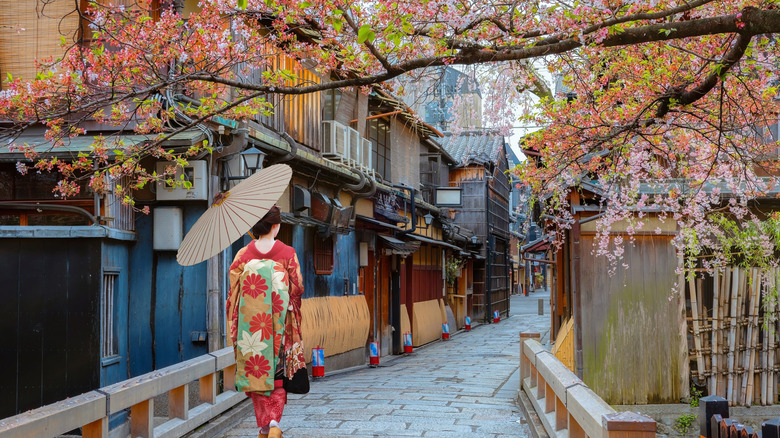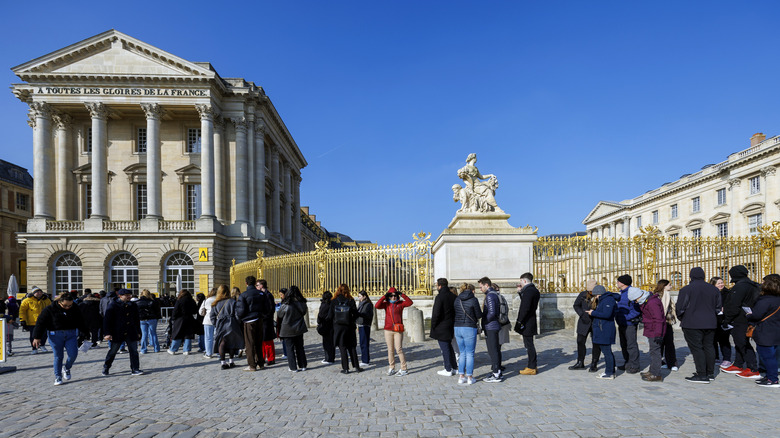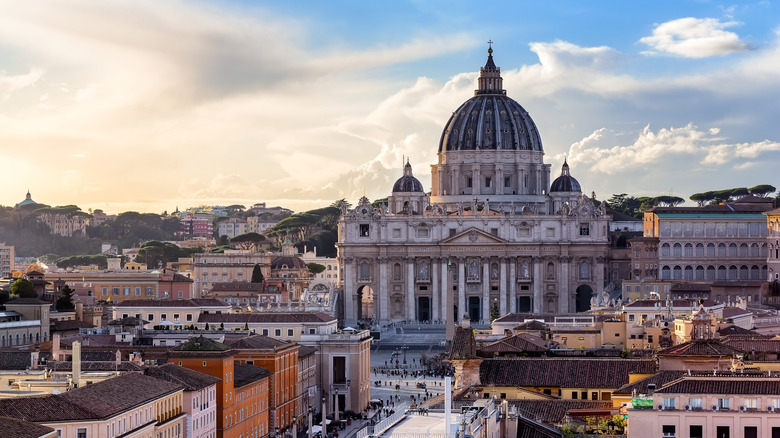These Popular Destinations Have Some Strange Selfie Bans
Selfies are as essential a part of travel today as passports and itineraries. Okay, not literally, but you get the point. From the Arctic wilderness of Norway to the white sand beaches of the Caribbean, it seems near impossible to visit a tourist destination without clicking a couple (or more) proofs of having checked it off your bucket list. Unfortunately, many popular travel hotspots worldwide have tight curbs in place to control the selfie-snapping craze that refuses to die down.
These selfie bans don't aim to clamp down on people's travel joys, per se. In fact, in most cases, they are backed by the logic that controlling people's obsession with taking the perfect shot — by banning selfie sticks or fining crowds that cause congestion — actually creates a better travel experience for everyone involved, as far as both safety and sanctity are concerned. Here are some popular destinations where clicking a selfie might get you into trouble.
Portofino, Italy
In a move that would doubtless have wrenched the hearts of several Italy-bound travelers, Portofino imposed a selfie ban in 2023 in certain areas of the vacation haven that were being choked up by tourists. Nestled in the picturesque vistas of the Italian Riviera, the town's quaint charm, sapphire waters, and Instagram-worthy color-blocked buildings attract thousands of visitors every year. However, the popularity seemingly disrupted regular life along the coastal village that houses just about 500 residents, leading authorities to impose curbs to control foreign crowds.
The selfie ban was primarily introduced to keep "lingering" tourists in check around two picture-perfect spots in Portofino that authorities declared no-waiting zones, with a fine of over $300 hanging overhead (via BBC). Taking a hard stance against the influx of tourism that was affecting local thoroughfare, Portofino Mayor Matteo Viacava called attention to the "anarchic chaos" that was being caused. In fact, Portofino is just one of the locales coming down on excessive tourism in Italy, which is among the many tourist destinations in the world encumbered by overtourism. The neighboring villages of Cinque Terre have also implemented several control measures to keep tourist behavior in check.
Disney Parks, Worldwide
The happiest place in the world is seemingly not too happy about selfie trends. Among the many things banned by Disney is the use of selfie sticks across several of its parks. The rule was imposed in 2015, not as a crackdown on the joy of making memories at the popular tourist destination but in answer to fears around the safety of its visitors. "Handheld extension poles have become a growing safety concern for both our guests and cast," a spokesperson for Disney told the BBC, with the control measure also making it to the official rulebook of Disney World.
The selfie regulation first came into effect across Disney theme parks in the United States, followed by properties in Paris and Hong Kong. The hazard potential of selfie sticks at Disney was also significantly highlighted in regard to its rides, with signboards indicating the ban being installed in places around the theme park. It's likely that the measure may have come through as a little bit of a killjoy for Disney's millions-strong visitor count, but it was apparently put into effect after much deliberation. According to Disney executive Kim Prunty, selfie stick-toting visitors were disrupting the smooth functioning of rides and also inconveniencing other guests in the process (via Reuters).
New York, United States
The state of New York stepped up for its big cats in 2014 by banning people from taking selfies with tigers. The curious-sounding regulation came into effect following an uptick of photos across the popular dating app Tinder of users — particularly men — posing with these wild beasts in a bid to create standout profiles. In fact, a report by The Wall Street Journal quoting public feedback suggested that tiger photos showed up in "one out of every 10 profiles" on the platform. It was only a matter of time before the trend caught the eye of higher-ups, who swiftly moved to put legislation in place to ensure the safety of everyone involved.
The law, which came into effect in 2015, prohibited visitors at zoos and circuses from getting up close and personal with not just tigers but also lions, leopards, and other members of the big cat family. New York State Assemblymember Linda Rosenthal, credited for pushing the bill into action, said in a statement that the regulation offered a two-way benefit for both people and animals. "We need not wait for a tragedy to occur before we ban a dangerous and wholly unnecessary practice that should already be illegal," she said, adding, "I guess some young men in New York will have to find another game."
Garoupe Beach, France
The stunning Plage de la Garoupe in Antibes has long been a hotspot for beach lovers, but this picturesque French locale became the center of a debate in 2014 after it imposed a temporary ban on selfies during peak holiday season. Parts of the sandy stretch were dubbed "No Braggies Zones," alluding to the growing trend of people uploading vacation pictures on social media that, according to authorities in France, qualified as bragging. The initiative wasn't so much a stern regulation as it was a cheeky push for tourists to actually enjoy their beachside holidays instead of obsessing over sun-kissed selfies — albeit with a team of "Holiday Spam Police" patrolling to keep them in check.
According to The Scotsman, a spokesperson for the Garoupe beaches emphasized: "We want people to be able to enjoy our exclusive beach in the moment, not spending the majority of their time here uploading selfies and sunsets to brag to their friends and family back home." The selfie ban, however, did not pass without criticism. John Lennon, travel consultant and professor of tourism at the Glasgow Caledonia University, told the outlet that the trend of taking pictures on holiday was hardly a construct of the internet age and "trying to stop it is almost a restriction of personal freedom."
Pamplona, Spain
Pamplona, the home ground of the famous Running of the Bulls event, draws thrill-seekers from around the globe for an opportunity of a lifetime. It goes without saying that this high-risk caper shapes this Spanish city up to be one of the world's most dangerous selfie destinations. One would assume that the sheer danger of being chased by raging bulls would give people enough of an adrenaline rush, but some daredevils have been known to up the stakes by trying to snap a selfie in the middle of all the chaos. Not the best idea, that's for sure.
In 2014, the event's ban on people using selfie cameras and other video-shooting devices during the run — which can carry fines of over $4,000, by the way — was spotlighted in a big way when reports emerged of a man violating this one cardinal rule. The selfie man, or "the idiot with the mobile" as he came to be known on social media platforms calling him out, was just inches away from a bull when he lifted a device to apparently capture the moment. Another such incident that took place in 2019 didn't end so well, with a selfie-taking runner being stabbed in the neck by a bull, only surviving death by sheer luck.
Mumbai, India
Selfie bans around parts of the Indian city of Mumbai were triggered by far more somber reasons than tourists creating a nuisance. In 2016, a local man lost his life while trying to save three young girls who fell into the sea while taking selfies near the famous promenade in Bandra, NDTV reported. "We will write to the civic body to put up signboards at tourists spots along the coast warning tourists and others that they should not take selfies as it is dangerous," Mumbai police said at the time.
A total of 16 spots in the city — including the popular Marine Drive and Chowpatty Beach — were eventually designated no-selfie zones, with the neighboring touristy state of Goa following suit. It would not be a far stretch to say that these curbs had been a long time coming, considering that India tops the list of countries with selfie-related deaths (via the National Institutes of Health). While the crackdown on selfies in India appeared to have been strictly imposed by way of fines and official notifications at the time, the urgency of the matter apparently grew lax, with incidents of photo-taking in these dangerous spots continuing to make headlines.
Mecca, Saudi Arabia
In a bid to preserve the sanctity of the holy cities of Mecca and Medina, authorities in Saudi Arabia moved to prohibit selfies and videos within the religious complexes in recent years. According to an official embassy advisory from 2018, "The measure was imposed to protect and preserve two of Islam's holiest sites, prevent the disturbance of worshippers and ensure tranquility while performing acts of worship," and could result in legal action for pilgrims using their cameras inside the main mosques.
Not only was the action implemented to reinforce the importance of undisturbed worship, but it also responded to concerns over crowd control, congestion, and the challenges of managing the millions of pilgrims who visit Mecca and Medina every year. While the official notice should have been enough to reiterate the solemnity of the pilgrimage and deter worshippers from obsessing over selfies, Islamic authorities have had to come forward consistently in the years since to remind them to focus on spiritual reflection rather than a superficial documentation of Hajj. As Abdulrahman Al-Sudais, Chief Imam at the Grand Mosque in Mecca, said in a 2025 statement: "Venerate the time and the holy place" (via Gulf News).
Beijing, China
In 2015, China joined an increasing list of countries trying to control the global selfie craze by banning selfie sticks at Beijing's Palace Museum, which is home to the historic Forbidden City and receives millions of visitors every year. The decision was sparked by concerns surrounding the damage camera devices and other photo-taking paraphernalia could potentially cause to the imperial complex, which dates back over 600 years and houses some of China's most treasured cultural relics. The risk was, understandably, too imminent to ignore.
Visitor safety was also highlighted, with officials noting that people preoccupied with capturing the perfect shot could be a source of nuisance in already crowded exhibition spaces. "Our staff will stop visitors using such devices when necessary," a representative told local media, according to the South China Morning Post. That said, the ban was reportedly not enforced too coercively, with people being allowed to still carry their selfie devices onto the property. Other similar institutions in China, like the Nanjing Museum, took a stronger stand against selfie equipment — banning selfie sticks, monopods, and tripods entirely.
Milan, Italy
Italy is one of the most sought-after tourist destinations around the world, but its popularity has come with inevitable signs of overtourism that many of its cities have been cracking down on for years. In 2017, for instance, Milan decided that it had finally had enough and put a string of regulations in place, banning seemingly random items in one go, from selfie sticks to glass bottles, cans, and even firecrackers. This assortment was hardly arbitrary and related to the nuisance value associated with tourist activities like photography and public drinking that were disrupting life in parts of the city.
While the ban may have seemed like a bit of a buzzkill for visitors planning their summer in Milan that year, the city made it clear that it was not taking its regulations lightly. Carmela Rozza, Milan's security councilor, stated that the temporary rule would "continue until it is needed," per The Local. Food trucks and street vendors also felt the effects of Milan's cleanup mission at the time, as authorities came down on "moving trade" in public spaces to curb the chaos.
Lake Tahoe, United States
Lake Tahoe is nothing short of a paradise for outdoor lovers, a category that includes both selfie-taking visitors and local bears. This naturally made for an undesirable situation that involved people snapping shots with these cuddly-looking but still wild and dangerous animals. Authorities in 2014 moved to impose a ban on the growing trend of bear selfies that appeared to have been taking over Lake Tahoe. "We've had mobs of people that are actually rushing toward the bears trying to get a "selfie" photo," a spokesperson for Lake Tahoe said, per the Reno Gazette-Journal. "It is presenting a safety issue. We are afraid someone is going to get attacked."
While an official site for these wild denizens of Lake Tahoe mentions that "Most bears are wary of humans and try to avoid them," it does simultaneously acknowledge that they could approach visitors, given their taste for human food. No selfie-related black bear maulings have been reported (yet) but for those visiting Lake Tahoe, the message is simple: Respect the wildlife, keep a safe distance, and let the camera's zoom do the work.
London, United Kingdom
In London, it started with museums. In 2015, as tourist-heavy locations around the world mulled over the hazard value of selfie sticks, the National Gallery of London moved quickly to make its stand clear on the subject by banning the photography equipment "in order to protect paintings, individual privacy and the overall visitor experience," according to the BBC. The regulation was positively welcomed by art connoisseurs, enthusiasts, and even the creator of the famous Museum Selfie Day trend (Mar Dixon), who told CNN: "Selfie sticks are brilliant, don't get me wrong, but not inside museums and galleries. Outside and for other attractions they are perfect!"
Unfortunately for Dixon and other selfie enthusiasts for whom the outdoors is a photography playground, London also has similar curbs at many public spaces and events where crowd safety is a concern, all the way from the famous O2 Arena to the iconic tennis courts of Wimbledon. Many theme parks and football grounds have also enforced bans, citing the risk of obstruction and injury. While these bans haven't interfered with London's status as one of the most photographed cities in the world, its stance on selfie sticks is a reminder that some views are best enjoyed without looking at them through a camera lens.
Kyoto, Japan
Japan is known the world over for its thorough attention to hospitality. But in recent years, owing to a heavy influx of tourists — and unruly ones at that — the peace-loving nation has had to put its foot down on certain photography trends. Kyoto marked one such major moment in 2019 by banning tourists from clicking pictures in parts of Gion, which is famous for housing the city's traditional geisha community. The women were reportedly being hounded by camera-toting tourists as they went about their day, even being harassed, hit, or non-consensually touched in some cases.
In many cases, even the nearly $70 fine for such intrusive photography hardly deterred the "geisha paparazzi," as these visitors are dubbed. One local representative of the district told CNN: "Even if we warn tourists, it is difficult to get through to them at this point." Kyoto is not the only place in Japan where curbs exist around selfies and photo-taking. The East Asian country banned the use of selfie sticks on almost 1,200 local railway stations, citing safety hazards as far back as 2015. And on the island of Hokkaido, security has been upped in places to prevent tourists from clogging the streets in the picturesque city of Otaru.
Versailles, France
The Palace of Versailles in France stands out as one of the world's most important attractions. However, in 2015, this heritage site decided that the modern selfie stick had no place within its historical walls. Leading a growing chorus of such institutions across countries fed up with intrusive photo-taking equipment, the palace added "flash photography, tripods and selfie sticks" to its list of prohibited items, making it the first such museum in Europe to do so, per CNN.
The rationale behind the restriction is not hard to understand, considering that the Palace of Versailles houses priceless antiques and artifacts that go back centuries and have so far been carefully preserved. The ban was also a response to the sheer volume of people visiting the French landmark — millions every year — and trying to navigate the palace's already packed halls and corridors through a sea of selfie sticks that could easily cause further chaos or become safety hazards. While photography is still allowed within the palace complex, the selfie ban serves as a cautionary reminder for travelers to make memories without disrupting the decorum of the places they visit.
Vatican City
The Vatican City is more than just a spiritual site and the world's smallest country. It is a living museum where history is preserved in some of the most significant artifacts and architectural marvels of our time, from the principal St. Peter's Basilica to Michelangelo's frescoes that adorn the ceilings of the Sistine Chapel. Naturally, the Church is particular about maintaining the institution, which is why several strict photography rules exist at the Vatican. Selfie sticks are banned within the Vatican Museums, for starters, as are "tripods and stands for photography, video cameras," according to the official website.
While no-flash photography is still permitted within the museums, the Sistine Chapel holds a strong view against filming videos or even unnecessarily using mobiles inside the complex. In fact, the world-famous chapel has put controls on tourist photography for decades, a rule that goes back to the 1980s when the Vatican entered into a deal with Nippon Television and granted the Japanese broadcaster exclusive rights to photography within the chapel. Years later, the ban still holds, now reinforced by concerns about preserving the centuries-old art — and not even superheroes are exempt from the rule. In 2022, "Aquaman" star Jason Momoa had to issue a public apology after posing for pictures inside the Sistine Chapel.
